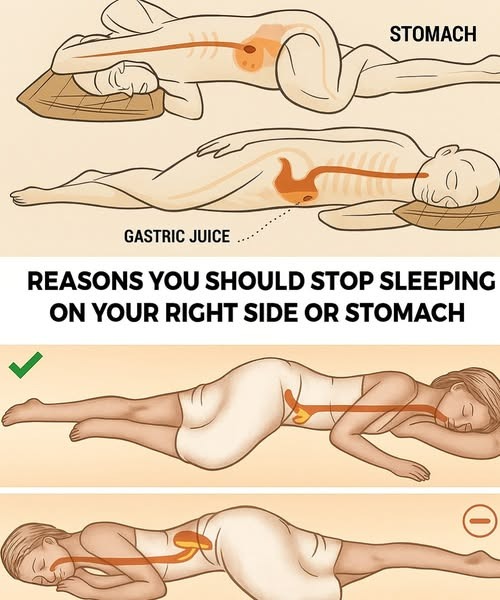Many people struggling with restless nights and poor-quality sleep turn to remedies like melatonin, white noise machines, lavender sprays, or the latest sleep-tracking apps, hoping to finally find the magic solution. But what if the real secret to better sleep isn’t about what you consume or which gadget you buy, but rather what sits just a few inches from your pillow?

Your bedside table, often treated as nothing more than a landing spot for a lamp or your phone, plays a surprisingly powerful role in shaping your sleep environment. The items you place there, intentionally or not, send signals to your brain about whether it’s time to relax and let go of the day, or whether it’s time to stay on high alert. This has nothing to do with decorating trends and everything to do with the cues your brain uses to regulate your circadian rhythm and mental readiness for rest. Your bedside area, whether calm and uncluttered or messy and overloaded with devices, can either be your biggest sleep ally or your worst sleep saboteur.
Experts on sleep and environmental psychology note that our surroundings strongly influence how quickly we fall asleep and how well we rest through the night. Bright lights, clutter, and electronic devices all create signals of stimulation, while soft lighting, soothing scents, and calming activities tell the brain that it’s safe to relax. Your bedside space essentially trains your brain—if it’s filled with reminders of work, stress, and constant connection, you’re more likely to toss and turn; if it communicates rest and comfort, you’re far more likely to drift off naturally. To build a sleep-friendly bedside environment, there are five essentials that stand out. First, keep a physical book or a journal nearby.
Unlike a phone or tablet, a book doesn’t emit sleep-disrupting blue light, and reading a few pages before bed or writing down lingering thoughts helps your brain ease out of productivity mode and into relaxation. Journaling can also serve as a way to unload stress before sleep, preventing your mind from racing once your head hits the pillow. Second, pay close attention to lighting. A small lamp with a soft, warm bulb is far better than harsh or blue-toned light, which tricks your brain into thinking it’s still daytime and suppresses melatonin, the hormone that regulates sleep. Third, place a glass of water in a simple, quiet container within reach.
This keeps you hydrated without the disturbance of clinking ice or having to get out of bed if you wake up thirsty in the middle of the night. Fourth, consider adding a calming scent such as lavender, chamomile, or sandalwood. A non-electric diffuser, essential oil, or light linen spray can create a soothing atmosphere that helps you associate your bedroom with peace and rest. Finally, the most important adjustment you can make is limiting your phone’s presence. If you must keep it in the room, put it on Do Not Disturb and place it out of arm’s reach. Better yet, leave it charging in another room altogether. Phones are one of the biggest disruptors of sleep, not just because of blue light but because of the mental stimulation that comes with scrolling, responding to messages, or checking notifications. Just as important as what to include on your bedside table is what not to include. Phones, tablets, work documents, bills, remotes, and unnecessary medications should all be kept elsewhere.
These items reinforce stress, distraction, and alertness instead of signaling safety and calm. The message your bedside should be sending is simple: “Rest. You’re safe here,” not “Check emails and stay alert.” The best part about this approach is that it doesn’t require spending a dime or investing in trendy gadgets. You can reset your bedside in five minutes: clear away clutter, remove electronics, place a book or journal where you can easily grab it, add a calming scent if you like, and set up soft, warm lighting that encourages relaxation. This simple ritual helps retrain your brain, reduces nighttime anxiety, and breaks the harmful habit of scrolling right before sleep.
Over time, this consistency creates a powerful cue for your body to unwind. These small changes can have surprisingly big results. By shifting the environment around your bed, you’re more likely to fall asleep faster, stay asleep longer, and wake up feeling more refreshed. Better sleep naturally improves mood, mental clarity, and focus the next day, making it easier to handle stress and be productive. Too often, people assume they need expensive mattresses, supplements, or expert coaching to sleep better, but sometimes the most meaningful difference comes from the smallest adjustments.
Your bedside space has more influence than you might imagine, and the way you set it up can either work with your body’s natural rhythms or fight against them. Before you switch off the lights tonight, take a moment to look at your bedside table and ask yourself an honest question: does this setup help me rest, or is it keeping me awake? By designing a bedside that fosters calm, safety, and intentionality, you’re not just tidying up a small piece of furniture—you’re creating a nightly ritual that tells your brain it’s time to let go, reset, and prepare for restorative sleep.





